The Article
“It’s Elemental, My Dear Watson!”: Leema Elements CD Player
24th January 2016
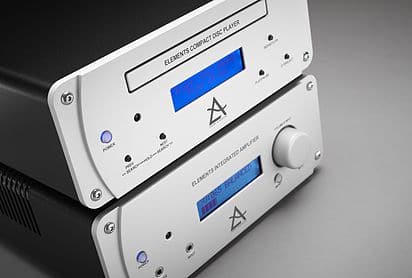
Keeping the digital faith, Leema has produced a brand new CD player. Paul Rigby braces himself against the Elements
CD players are terribly unfashionable, despite the fact that many CDs are still being produced. So why would a hi-fi company want to produce a new CD player? Cheeky, chirpy Leema co-founder, Lee Taylor just wants to be, “…the last man standing! I’ve got a large CD collection. I think that, bizarrely, CD replay has mirrored vinyl. Just as vinyl ‘died’, our ability to replay it got to be really quite good. CD, for years, was crap. Now, its playback quality is quite good. It’s a real shame but a lot of people will drop CDs but, as a hardware producer, our CD player sales have hardly dropped at all. You have to remember that some of our markets, like Russia, their infrastructure for streaming is appalling. For them, vinyl or CD is their go-to resource.”
The new elements CD player has a might heritage and an imaginative internal layout, though. It’s a trickle-down design from the flagship Leema Antilla CD player.
During the design preparation, Leema sat and listened to a range of DACs and arrived at some intriguing conclusions that might surprise you, “I thought that Burr Brown was the worst thing I’d heard in my life. The Sabre is rubbish too. We designed a full product around the Sabre and had to reject it. At full peak audio, on the left hand channel, the output collapses. They know about it. It’s a fabrication issue. We had to totally redesign the Libra because of that. Why people are raving about the Sabre? Well, it’s ‘Emperor’s New Clothes’ isn’t it? We threw tens of thousands of development pounds out of the window because of it.”
The Crystal DACs, according to Taylor, have an analogue tone so they were a favourite to use in the new CD player, “For the Elements, we use four Crystals. We use four because we generate a digital inverse signal, we then put it through the DAC, the same piece of silicon so you’ve got a plus phase on one leg and a minus phase on another. We then reintegrate it on the other side so that any silicon noise is cancelled out. There are two DACs in one chip and two DACs in the other. We use four because, although we like the sound of the Crystals, we didn’t think that, technically, they had as good a specification as the Burr Browns. In this way, we can do that.”
The whole thing is placed within a small form chassis shape that is ideal for small spaces: a small flat or an ideal second system hi-fi chain. The size does compliment other products that also feature in a similarly sized chassis shape.
WALK AROUND
On the front of the chassis is the usual suite of CD interface buttons. If you press and hold the repeat button, you enter the LIPS interface system, “When we started out, all of the home cinema amps were crap. The way we approached it was that you could build an entire home cinema system just out of our components. You could use one of our integrated amps plus two stereo slave amps: they all have AV inputs. So, if you had an Oppo or an AV processor, you could put the relevant outputs into each amplifier. The problem with that was that, how do you control the volume? LIPS solved that issue. So, if you adjusted the volume on the master unit, it adjusted the volume on the units lower down. All of our products have a volume chip in them.”
This is a Pro thing. Leena aimed at maintaining a high signal level in the interconnects to attenuate right at the input of the amplifier, “What hi-fi does is that they have pre-amps with a volume control in. You are running at low level quite a lot of the time so you are putting a pretty low signal through your interconnects,” said Taylor. “If you do it the other way round and put a high-level signal through the interconnects and only adjust the volume right at the end of the circuit then the signal is high level. Hence, the signal to noise level is much better. Sound quality improves. You need LIPS to do it, though. You have to tell the amplifier what volume to set itself to. You really need a full Leema system chain to do this properly.”
Of course, if you have a home cinema, it also allows you to put the amplifiers away in an air conditioned cupboard and run everything from the pre-amp. So, if you turn the pre-amp on, it turns the amps on too, in sequence. They auto-configure to avoid mains tripping. Each one is turned on with a half second gap, “There’s also no degradation for very long cables because you’re running a high level signal down them,” said Taylor.
On the back of the CD player are the standard connections plus balanced XLRs so that you can bi-amp directly from the source using LIPS. You could control a couple of monoblocks straight from your CD player if you want.
Leena decided to use a Redbook-compliant transport, bought in front TEAC. Most manfacturers, these days, use a computer or multi-purpose drive, “We do not want to do that. There are various reasons to use a Redbook drive. For example, they are much more reliable in getting data off a disc. Also, the transport runs into a large buffer memory. If it loses data, it fills it in from the memory. This means that the drive won’t skip. Other drives use buffer memory but ours has been implemented on a larger scale. Hence, our drive has an additional three or four tries at filling in lost memory than a normal drive. The data is more robust. It allows your CD player to be positioned in some pretty weird places without any issues. Other lesser CD players wouldn’t be able to cope.”
Another thing with the TEAC, you won’t hear that jet engine-like speeding up disc noise from the computer drive mechanism as it pulls data off at high speeds and then stops, “It’s bloody irritating!” said Taylor with feeling. “Our drive is pretty much silent. Also, computer drive lasers are not always optimised for audio CD use. If a CD is damaged or marginal, a computer drive may give up. A Redbook drive will read the disc.”
There are four separate regulated power supplies in the chassis too. The power comes off a single toroidal but then is separated into different windings for each power supply, “A lot of people have a 15V supply then resistor it down to generate the other supplies. Having separate windings means that each supply is isolated from the other. The toroidal is custom made from us by Toroid itself. We use extra low flux models.”
The CD player is made in the UK – not constructed – created, “I can even give you the metal worker’s address if you want it. We tried to do this in China but it was shite. The minimum order quantities were too high. Shipping was expensive. Also, you have to dump quality concern issues. If I have issues like that in the UK, I can get into a car and, two hours later, be kicking someone’s arse. Not that we have much trouble at all. We’ve had the same suppliers for many years now. I didn’t start a company to then give it to China for them to do it for me. There’s no point doing it, then. I’m a British engineer. What’s the point otherwise?”
SOUND QUALITY
Spinning Depeche Mode’s, World In My Eyes, from the first note, I heard the Leema make a significant sonic impact because I normally listen to CDs with my pre-amp fixed at around 60-64 (out of a 100) in terms of gain. With the Leema fixed to the hi-fi chain, it showed how well designed it is because the noise level is very low for the price. To the extent that I had to increase the pre-amp’s gain to 69 to attain the same volume.
This track is busy, busy, busy in terms of its arrangement with multiple synth layering plus subtle percussive elements. What this meant was that the Leema lifted all of these subtleties up from the ground and presented them to the ear. Firstly, the higher gain gave these elements a fighting chance to be heard and, secondly, the low noise meant that detail didn’t have to fight through distortive noise to make itself heard. This also helped the bass kicks which were not only precise but held a more believable reverb tail.
More than that, though, lead singer David Gahan’s vocal sounded suitably smooth and positioned in a more airy space that set him slightly apart from the instrumentation.
Finally, during those periods of the song which introduced a sustained synth note, the instrument had a far more effective, soundscape sustain with a spacious, atmospheric suite of effects.
A live version of Lover of the Bayou from The Byrds, from the (Untitled)/(Unissued) album, was entertaining because the lower basic noise floor removed any slight compression and distortion that derived from the less than perfect recording situation. The percussion on this track maintained an admirably focused and tight presentation for the live situation with pleasant treble effects providing a welcome extra dimension to the soundstage.
Moving to a more organic studio recording, I turned to Mosaic’s rather strident recording of Johnny Mercer’s I Guess I’ll Have To Change My Plan. This track was especially revealing in what can go wrong if you use a CD player that is prone to noise. What the Leema did here was grab the backing jazz orchestra by the scruff of the neck and impose some control upon the brass section which can, on this song, easily be awash with a bloomy smear that removes any edges to the brass playback. The focus from the Leema allowed the brass to enhance its tonal realism rather than spending its time hurting ears. The piano middle eight was the worst culprit for a noise-affected performance. What was a bloated and sprawling mess now settled down into a musical and harmonically complex passage. Similarly, Mercer’s own vocal performance was precise and interesting. He now articulated the lyrics instead of vomiting them.
CONCLUSION
The Leema is a simple beast that does simple things very well. Its chassis style is ideal for small spaces and awkward layouts and, although I advise Leema to bundle an electron microscope with this CD player, in order for grown adults to use the tiny button interface, the Leema does score where it counts: the internal design. The sonic elements of the Leema have been carefully designed with an admirable focus on lowering nasty noise to provide a smooth and detailed performance that provides anyone looking for a transparent digital playback a top of the list demo contender.
LEEMA ELEMENTS CD PLAYER
Price: £1,395
Website: www.leema-acoustics.com
Tel: 01938 559021
Good: clarity, transparency, low noise, chassis design.
Bad: button interface only fit for pixies, fairies and other tiny mythical folk

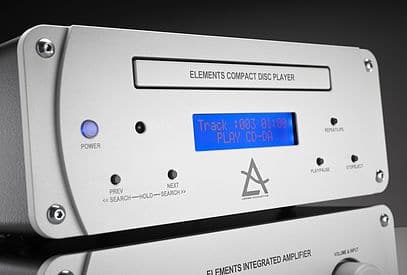
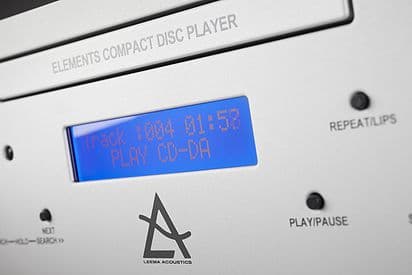
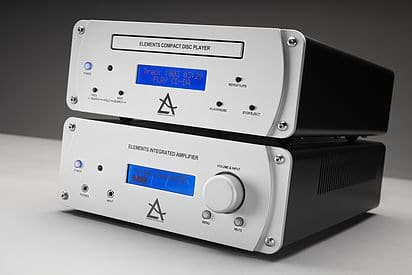
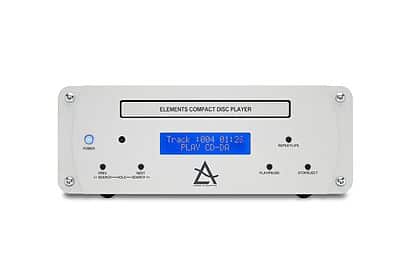

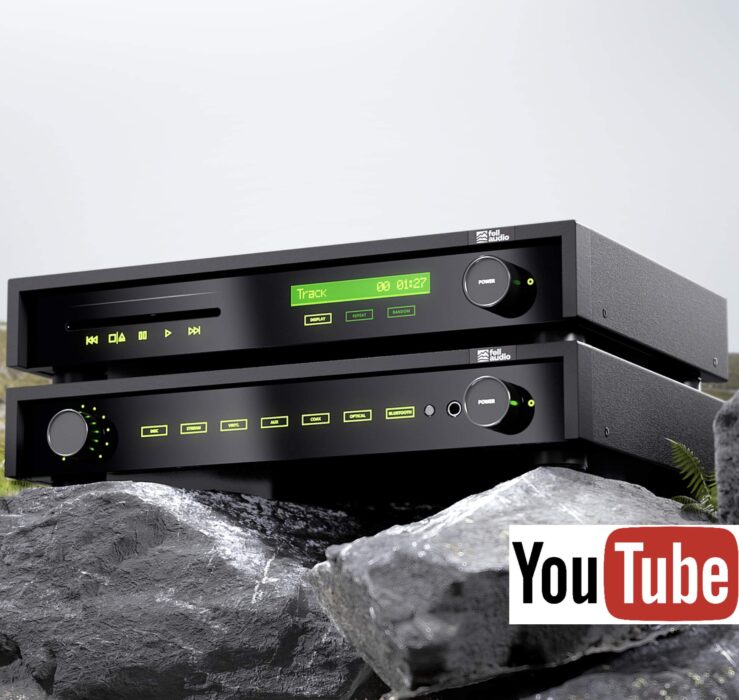

Hello Paul,
I don’t understand how you can connect the cd player straight to a power amp. How do you control the volume in this configuration? With Lips, with the remote? Could you please explain further. Thank you. And happy holidays!
Best regards
Geoff
Hi Geoff –
1: I think that refers to the LIPS set-up possibilities. I was trying (obviously unsuccessfully 🙂 ) to briefly explain that LIPS is a flexible networking system.
2: As for other hi-fi magazines (or even individual journalists)? Without referring directly to that mag – just a piece of very general advice – I always recommend that, if you can, you should spend time with a particular publication/writer. You’ll get to know the way they work and think, their likes and dislikes plus their style. When you come to conclusions, filter the guys you dislike and stick with the people you feel are on the same wavelength as you. Saves confusion and stress in the long run.
3: The Leema Essential is relatively balanced unit without any emphasis in bass or anywhere else, really. If you demand bass then go directly the Leema Antila. It’s a monster. A scary bass monster that I only ever use in the company of a protective chair and a whip.
I just read the manual. Complicated but starting to understand. I read your review on the pre and power amp again. You also had so confusing moments. But nothing that can’t be overcome. So you use the remote volume control to change the gain.
I don’t think you connected the cd player directly to the power amp at the tile of the review or did you?
Best regards
Geoff
Hello Paul,
Last question if i may. How is the bass reproduction on your essential cd palyer. Do you feel it delivers enough bass?
Thanks
Thanks for the usefull comments! Much appreciated!